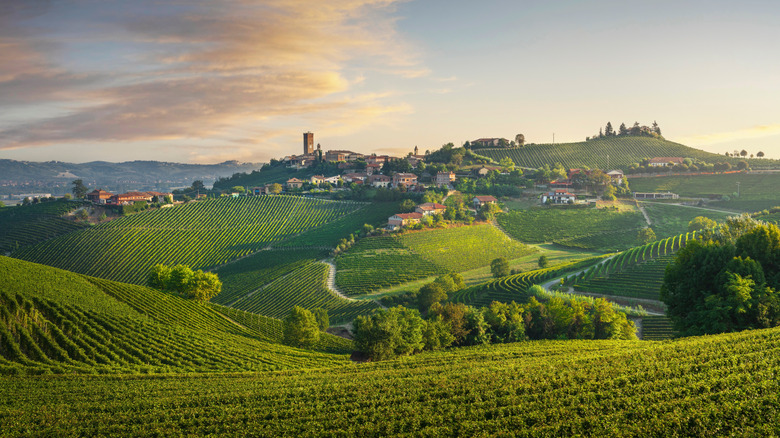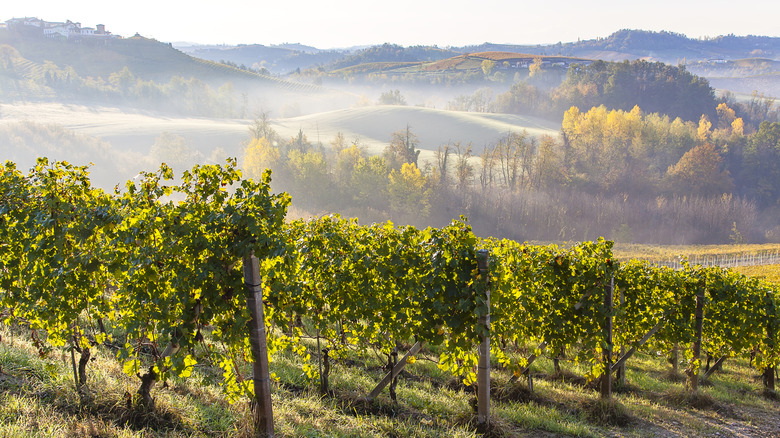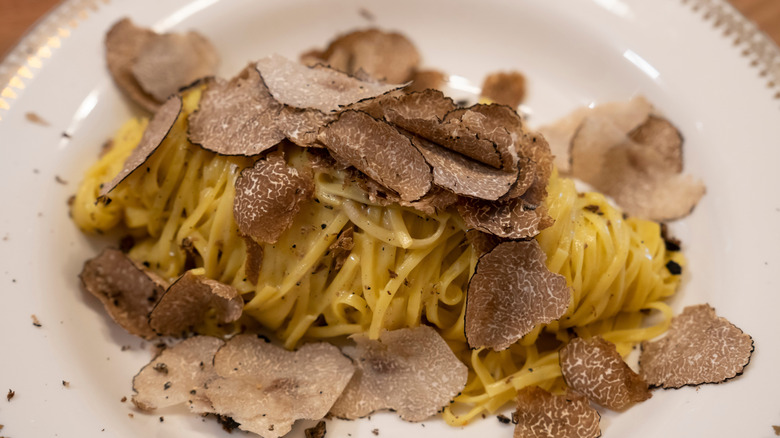Northwest Italy's Famous Elegant Wine Region Is Known For Complex Reds, Serene Hills, Cheese, And Truffles
Northern Italy has no shortage of bucket-list attractions. There are the sparkling waters and idyllic resort towns of Lake Garda, the ski resorts of Cervinia and Val Gardena, and the breathtaking peaks of the Dolomites. Further west lies yet another gem that's perfect for foodies, lovers of the great outdoors, and wine buffs. It's called Langhe, and it's a whole region of undulating hills and vineyards, historic hill towns, and truffle-filled forests.
The region is eminently accessible, especially compared to the high mountains further north. It's sandwiched between two major provincial airports — Turin Airport and Genoa Airport — and the drive into the very heart of lovely Langhe takes around just 1.5 hours from both. Alternatively, you can hop on a train in Turin and be stepping out onto the cobbled streets of Alba, one of the main hubs of Langhe, in a little over an hour.
There's plenty in the region to keep you entertained. Forbes lists the area as the highlight of the greater Piedmont wine region, which it also places among the top 10 wine regions in the whole of Europe! There are oodles of hiking trails and mountain biking paths that weave through the green hills for outdoorsy types. And then there's the food, from the egg pastas topped with white truffle to the famous cheeses to the chocolate, hazelnut, and amaretti biscuit desserts.
The legendary wines of Langhe
Wine takes center stage in the Langhe region. There are two names that you simply must know: Barolo and Barbaresco. It's not for nothing that these form the subheading of "A Wine Atlas of the Langhe," a book authored by the co-founder of the Slow Food movement, Carlo Petrini, to showcase the prestigious and celebrated viticulture of the region.
Barolo is said to have once been the favorite tipple of the nobles of the House of Savoy, which has given it the nickname "the wine of kings, the king of wines." It's made from the local nebbiolo grape, which is notoriously sensitive to climatic changes, demanding the utmost care and attention. Barbaresco is equally as iconic and also made from nebbiolo grapes, but it's generally seen as a lighter, lower-tannin wine with a bit less of a punch.
The town of Barolo is often picked out as the best base for wine lovers. Not only does it have cellar doors aplenty — including the much-talked-about Cannubi winery, the home of ultra-complex reds — but it's a downright gorgeous place with little piazzas and terracotta-colored churches. Monforte d'Alba is another good option, offering 53 wineries in all, many of which have stunning views of the sylvan valleys that dominate in this undeveloped corner of the Langhe.
Langhe's hiking, dining, and local culture
This isn't just a destination for wine lovers. It's a foodie mecca to boot. In fact, the revolutionary Slow Food movement is based in the town of Bra, which sits amid the Cuneo hills in the west of the Langhe region. The movement is all about promoting local food heritage and sustainability, something this area has by the wine vat load.
Take the much-anticipated annual Alba White Truffle Fair. If you happen to be around in the late autumn and early winter, drop by to see the buying and selling of some of the world's most expensive fungi, taste truffle-topped pasta dishes, and witness the unique donkey race and processions of people in traditional garb. Then there are the cheeses of the Langhe. There are over 30 different types in the Piedmont region, with many of the most iconic hailing from the hills here. They include the ancient Castelmagno variety, a sharp and tangy blue cheese crafted from a combination of cow and goat or sheep milk.
Once you're done dining, the Langhe offers plenty of opportunity to burn off the calories. It's home to the long-distance hiking trail of the Grande Traversata delle Langhe. It may not be quite as dramatic as the mountain cliffs of the Dolomites, but it's serene and scenic, linking up myriad small villages via marked trails that weave between forested hillsides and bucolic river valleys. There are also shorter routes that loop through the UNESCO territory of the Barolo wine area — perfect for those who don't want to stray too far from the legendary reds!


